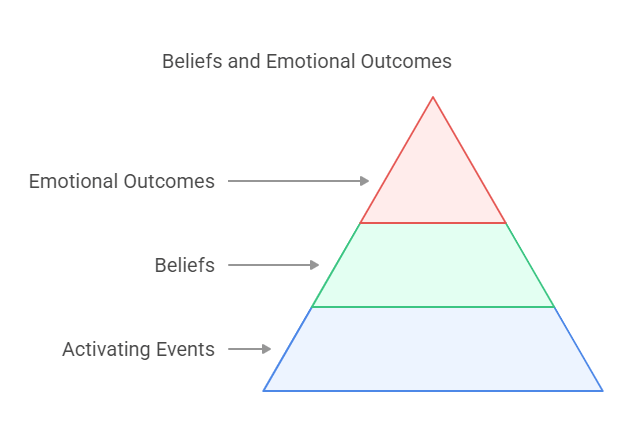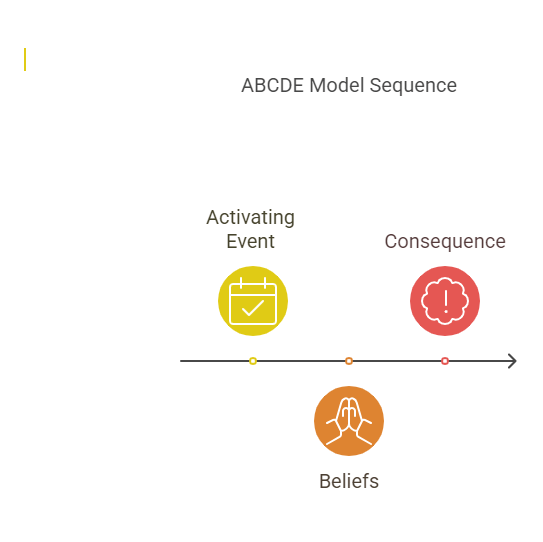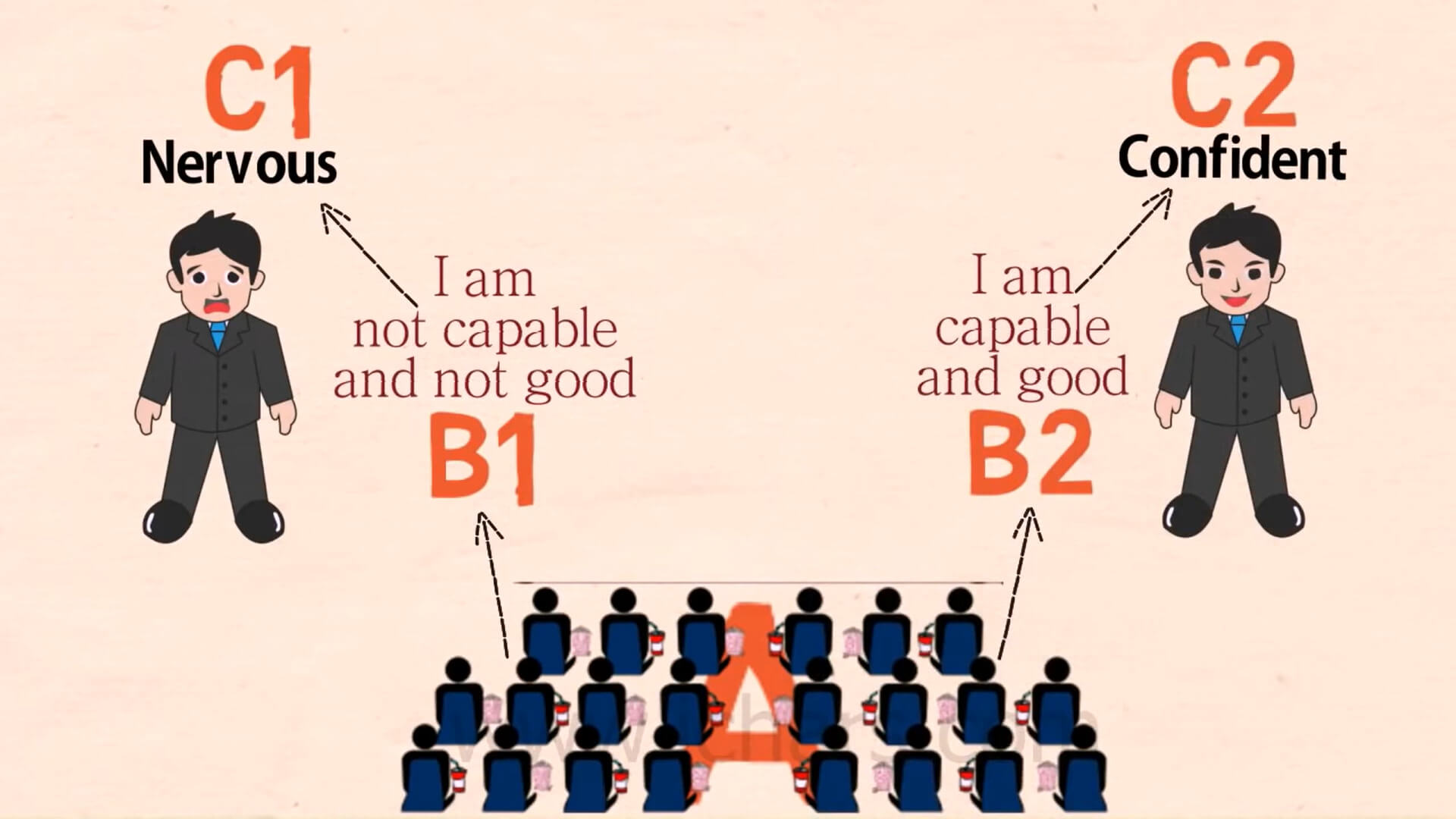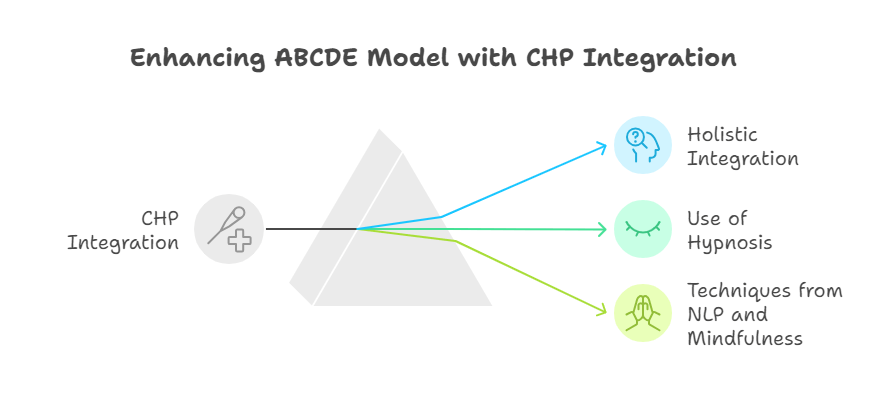In this post, we will focus on understanding how when we become upset, it is not the events taking place in our lives that upset us, but it is our beliefs that cause us to become depressed, anxious, sad, etc.


ABCDE model developed by Dr. Albert Ellis
To illustrate this, we will use a simple ABCDE model developed by Dr. Albert Ellis. In this model:
(‘A’) refers to Activating event, which means whatever it is that started things off: a circumstance, another person’s behaviour or our own thoughts about something which has happened.
(‘B‘) refers to our beliefs. These beliefs can be about ourselves, others, things, situations. Beliefs can be specific or generalised.
(‘C‘) refers to the consequence, i.e. our reaction to (A) in terms of both emotions and behaviours
ABCDE model Example
Let us take an example to understand this:
Say two boys have to make individual presentations in front of the same group. This will be the first presentation that either of them has ever made, and both of them have prepared well.
Yet the first boy at the time of presentation gets nervous, goes blank, and his presentation goes for a toss. Whereas the second boy is confident and makes the presentation effectively. Both these boys were in exactly the same situations, but their emotional and behavioural responses differed.
For both the boys, the activating event was facing the audience. For the first boy, the activating event triggered a belief that “I am not capable and not good enough”, which led to the feeling of nervousness and poor presentation. For the second boy, the activating event triggered a belief that “I am capable and good”, which led to the feeling of confidence and effective presentation.

Once we understand our behaviour through the ABC model, we can add a DE to the same to create a positive change in our behaviour.
(‘D’) represents Disputing irrational beliefs
(‘E’) represents creating Effective new belief
Going back to the earlier example, let us understand the application of D & E for the boy who got nervous.
So, as per the ABCDE model, if we were to dispute the original belief that I am not capable and not good in a way that we could break it along with creating an effective new belief that I am capable and good, the boy would now begin to feel confident which given the fact that he is well prepared will help him deliver effectively.
Incorporation of the ABCDE Model in Cognitive Hypnotic Psychotherapy
The Cognitive Hypnotic Psychotherapy (CHP) framework seamlessly incorporates the ABCDE model and enhances its effectiveness by integrating it with various other therapeutic techniques. Here’s how CHP builds on the ABCDE model:

- Holistic Integration:
- CHP combines the ABCDE model with elements from Cognitive, Behavioral, Humanistic, and Psychodynamic therapies, creating a more comprehensive approach to understanding and altering beliefs as advocated in REBT.
- Use of Hypnosis:
- Hypnosis is utilized to access the subconscious mind, where many limiting beliefs reside. This makes the process of identifying and disputing irrational beliefs (D) more efficient and profound, aligning with the principles of REBT.
- Techniques from NLP and Mindfulness:
- Techniques like anchoring, submodality changes, and mindfulness practices help reinforce new effective beliefs (E), enhancing client engagement and therapeutic outcomes.
By incorporating and enhancing the ABCDE model within its broader framework, Cognitive Hypnotic Psychotherapy provides a robust, multifaceted approach to personal transformation. This integration ensures that clients not only dispute irrational beliefs and form new ones but also sustain these changes through a combination of techniques that address cognitive, emotional, behavioral, and subconscious dimensions.

